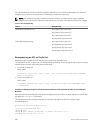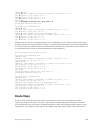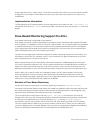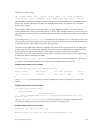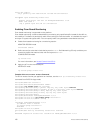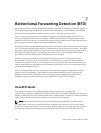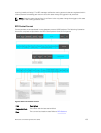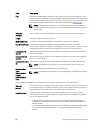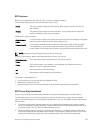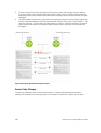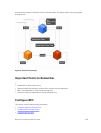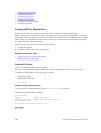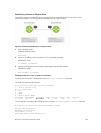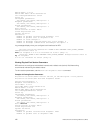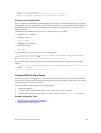
Field Description
Flag A bit that indicates packet function. If the poll bit is set, the receiving system must
respond as soon as possible, without regard to its transmit interval. The responding
system clears the poll bit and sets the final bit in its response. The poll and final bits
are used during the handshake and in Demand mode (refer to BFD Sessions).
NOTE: Dell Networking OS does not currently support multi-point sessions,
Demand mode, authentication, or control plane independence; these bits are
always clear.
Detection
Multiplier
The number of packets that must be missed in order to declare a session down.
Length The entire length of the BFD packet.
My Discriminator A random number generated by the local system to identify the session.
Your Discriminator A random number generated by the remote system to identify the session.
Discriminator values are necessary to identify the session to which a control packet
belongs because there can be many sessions running on a single interface.
Desired Min TX
Interval
The minimum rate at which the local system would like to send control packets to
the remote system.
Required Min RX
Interval
The minimum rate at which the local system would like to receive control packets
from the remote system.
Required Min Echo
RX
The minimum rate at which the local system would like to receive echo packets.
NOTE: Dell Networking OS does not currently support the echo function.
Authentication
Type,
Authentication
Length,
Authentication
Data
An optional method for authenticating control packets.
NOTE: Dell Networking OS does not currently support the BFD authentication
function.
Two important parameters are calculated using the values contained in the control packet.
Transmit
interval
Transmit interval is the agreed-upon rate at which a system sends control packets.
Each system has its own transmit interval, which is the greater of the last received
remote Desired TX Interval and the local Required Min RX Interval.
Detection time Detection time is the amount of time that a system does not receive a control
packet, after which the system determines that the session has failed. Each system
has its own detection time.
• In Asynchronous mode: Detection time is the remote Detection Multiplier
multiplied by greater of the remote Desired TX Interval and the local Required
Min RX Interval.
• In Demand mode: Detection time is the local Detection Multiplier multiplied by
the greater of the local Desired Min TX and the remote Required Min RX
Interval.
136
Bidirectional Forwarding Detection (BFD)



